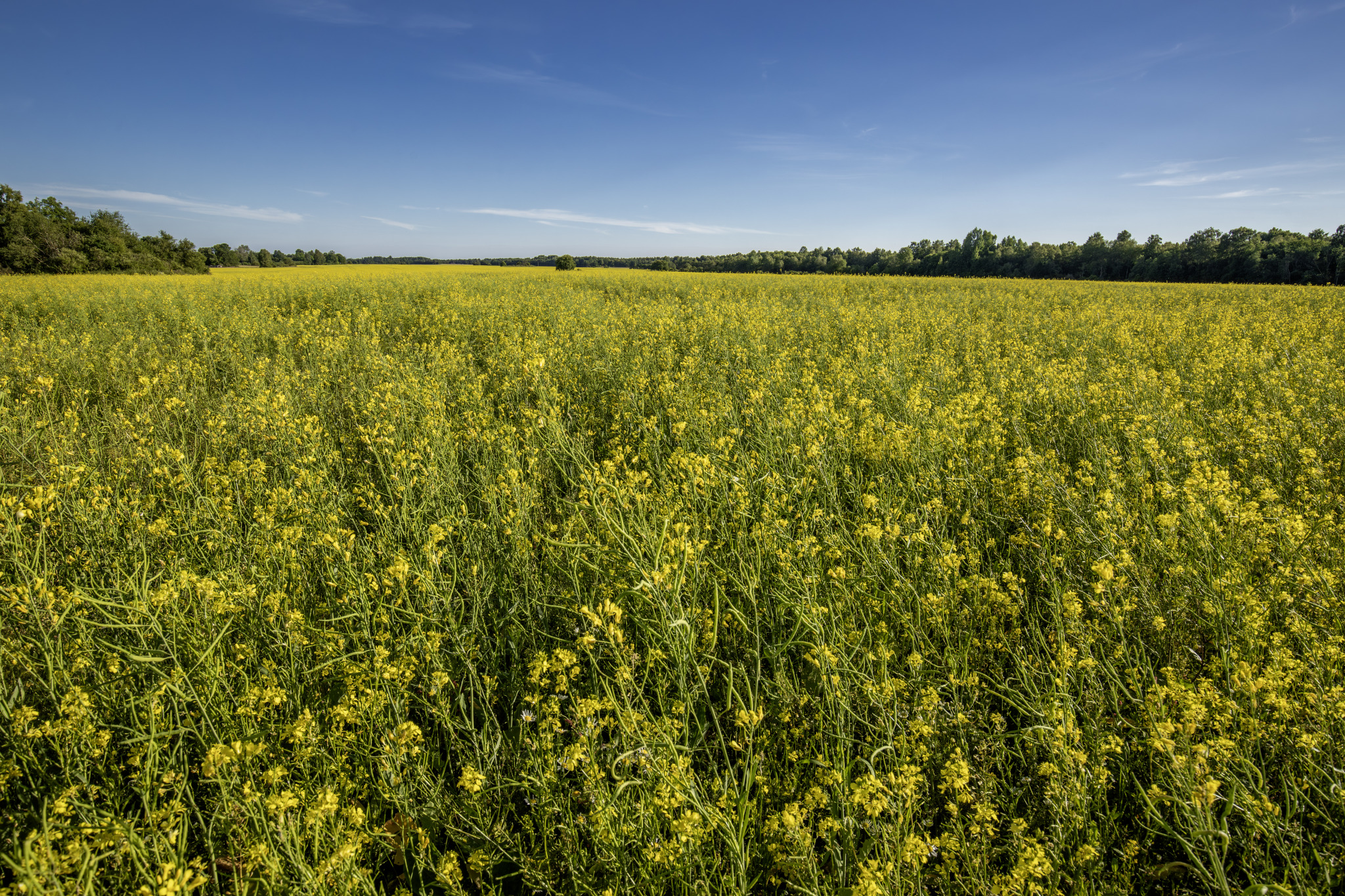Rapeseed (Brassica napus) is a versatile and economically important crop widely cultivated for its oil-rich seeds. Here are some key details about this plant:
Appearance
- Size: Rapeseed plants typically grow to a height of 1-2 meters (3-6 feet).
- Leaves: The leaves are large, lobed, and have a bluish-green color.
- Flowers: The plant produces bright yellow flowers arranged in clusters at the top of the stem. Each flower has four petals.
- Seeds: The seeds are small, round, and dark brown or black, contained within elongated pods.
Habitat
- Range: Rapeseed is grown worldwide, with significant cultivation in Europe, Canada, China, and India.
- Environment: It thrives in temperate climates with well-drained, fertile soils. The plant is tolerant of a range of soil types and can withstand cold temperatures.
Uses
- Oil Production: The primary use of rapeseed is for its oil. Rapeseed oil is used in cooking, food processing, and as an ingredient in various products. It is also used as a biodiesel feedstock.
- Animal Feed: The meal left after oil extraction, known as rapeseed cake or meal, is a high-protein feed for livestock.
- Industrial Applications: Rapeseed oil is used in the manufacture of lubricants, soaps, and other industrial products.
Cultivation
- Planting: Rapeseed is usually sown in early spring or late summer. The seeds are planted shallowly in well-prepared soil.
- Growth: The plant grows rapidly, with a rosette of leaves forming before the stem elongates and flowers appear.
- Harvesting: Harvesting typically occurs in late summer or early autumn when the pods have matured and turned brown. The seeds are mechanically harvested using combines.
Benefits
- Nutritional Value: Rapeseed oil is low in saturated fat and high in monounsaturated fats and omega-3 fatty acids, making it a heart-healthy choice for cooking.
- Soil Health: The deep root system of rapeseed helps improve soil structure and reduce erosion. The plant also adds organic matter to the soil, enhancing fertility.
- Biodiesel: Rapeseed oil is a sustainable and renewable source of biodiesel, contributing to reduced greenhouse gas emissions.
Challenges
- Pests and Diseases: Rapeseed is susceptible to pests like flea beetles and aphids, and diseases such as blackleg, clubroot, and sclerotinia stem rot. Integrated pest management strategies are essential for minimizing these risks.
- Environmental Impact: Intensive cultivation of rapeseed can lead to issues like soil degradation and nutrient leaching. Sustainable farming practices, such as crop rotation and reduced chemical inputs, are crucial to mitigating these impacts.
Conservation and Sustainability
- Crop Rotation: Incorporating rapeseed into crop rotations helps break pest and disease cycles and improves soil health.
- Breeding Programs: Research and breeding programs focus on developing rapeseed varieties with improved yield, disease resistance, and oil quality. Genetically modified (GM) varieties have been developed to enhance these traits.
- Sustainable Practices: Sustainable cultivation practices, including organic farming, reduced tillage, and precision agriculture, are promoted to enhance the environmental benefits of rapeseed farming.
Rapeseed is a valuable crop with multiple uses and benefits, from providing nutritious oil and animal feed to supporting sustainable agriculture and renewable energy. Efforts to improve its cultivation and address environmental challenges continue to enhance its role in global agriculture.
Visited 142 times, 27 visit(s) today
Views: 298
Subscribe to the newsletter:
